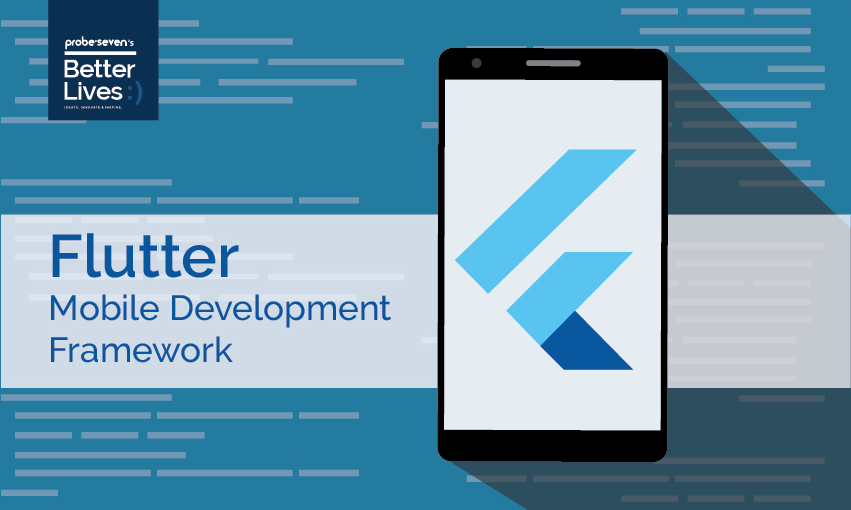
Introduction
In the last decade, smart phones have certainly been successful in taking the market by storm. One of the companies that led to the revolution of these gadgets was the technology giant – Google.The same company is leading yet another revolution.however,this time is surrounding mobile applications.Since the inception of smart gadgets, apps have been noted to run on these, be it any platform. While some apps were designed to run any platform, some others were coded to work specifically on some particular operating systems. However, they all have one thing in common- the complication related to their codes. Programmers spend hours designing these applications. To overcome this issue Google took a step forward to release a software that make the work a lot easier. Known by the name of Flutter.
History of Flutter
It basically builds applications that can run on Android and IOS. Flutter has its engine designed primarily in C++, a language that is heavily used and easily understood. Additionally , it uses Google’s graphics library from Skia, thus providing huge array of predefined attributes , like animations. While previously all of this needed to be done by the programmers manually, Google, with its software, has reduced the work considerably
Flutter was first unveiled in 2015 at the Dart developer submit.Then, it was codenamed ‘Sky’ and was operational on the operating system.In December 2018, the first stable version of the frame work, dubbed Flutter 1.0 was released.Flutter uses the Dart language which is also a product of Google. Google uses these for many of its major projects. You can create native apps for both iOS and Android platforms. Flutter helps an app development company to develop apps very quickly. It is because Flutter uses a single codebase to build apps and interfaces.
Introduction to Dart
Dart is the programming language that powers Flutter.It was developed by Google as a general purpose and language for developers. It was to serve as an efficient to build mobile applications ,servers and webpages.
Dart has been influenced large by java, the language that is used to write the most complicated codes. Hence, Dart is accepted worldwide due to its resemblance to the most used language. Needless to say, much like Java, Dart follow the principles of OOPS concept. Hence, It supports, abstraction, encapsulation, data hiding, and other such features.
Basics of Flutter:
Flutter comprises of four key components.
- Dart platform: Flutter applications are written in Dart language and further mak use of a number of the language’s complicated features.
- Flutter engine: This is written in C++ provides a kind of low-level support.It makes use of Google’s Skia graphics library
- Foundation library: The foundation library, written in Dart, provides the basic function which are used in the development of applications.
- Design-specific widgets: The Flutter framework comprises of two types of widgets: Material design widgets which make use of Google’s design language and Cupertino widgets which emulate the desig of iOS.
Relationship between Flutter and Fushcia

Fuchsia is the operating system that is going to be launched by the Google. Google Fushcia OS is not an upgrade of Chrome OS or Android OS. Instead, it is a standalone platform that follows a completely different framework.It is also interesting to note that, unlike Android and Chrome OS, Fuchsia is not a derivative of Linux.
According to many critics, Flutter is actually paving a solid for Fuchsia. Flutter, being an open source, cross-platform app building software that it is, is preparing the marker for an operating system is that will make the software even more efficient.
React Native VS Flutter
React Native is perhaps the renowned world champion of cross-platform mobile development. React Native is a javascript framework built upon the React library, both created by Facebook, and it allows you to ship IOS and Android apps with a single code base. It’s used primarily by Facebook, Instagram, Airbnb, and many others.


PROS of Flutter:
Flutter has a number of advantages that allow it to attract a large developer community and lots of app owners.
- Hot Reload
- Cross Platform development
- MVP (minimum viable product)
- Less code and testing
- Easy to setup
CONS of Flutter:
Flutter having some drawbacks also.Even though cross-platform development is new programming practice. Let see what are the drawbacks in Flutter.
- Lack of third party libraries
- Large app file size
- Libraries & support – impressive but it still not rich as native development
- Platform risk
Conclusion
React Native and Flutter both have their pros and cons, but Flutter came out as the winner in this match. Some of the experts have predicted that flutter is the future of mobile app development.Now it’s clear that flutter has entered the cross-platform mobile development race very strongly.

Leave a Reply